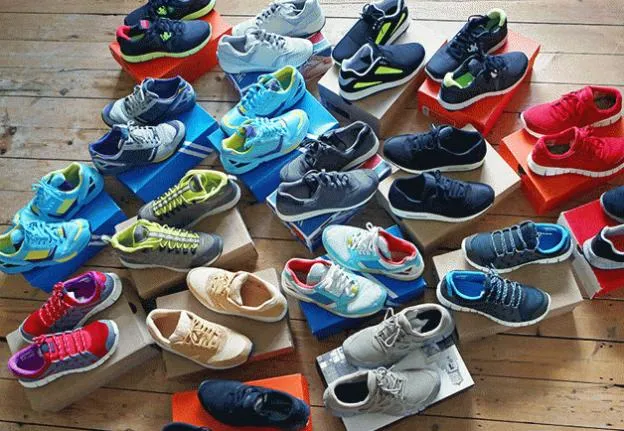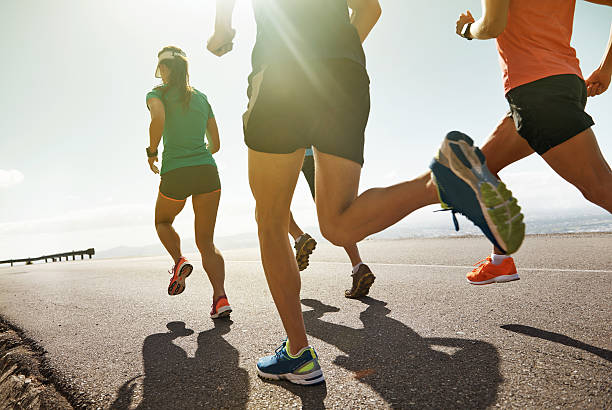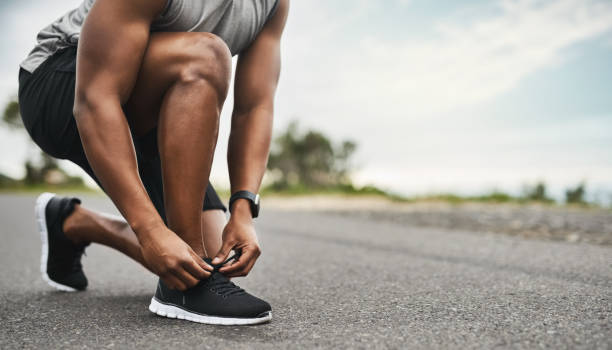What Is A Zero-drop Shoe: Benefits, Potential Risks & Transition

The angle between your heel and toes is referred to as the zero-drop. Traditional footwear elevates the heel by an average of 14–24mm (0.5–1.0”), which causes an unnatural heel strike and affects the alignment of the spine.
Your toes and heel will be level in a zero-drop shoe, simulating how you would stand barefoot in nature on a flat surface.
When reading about running shoe details, sometimes you will encounter the phrase “zero-drop.” But what does the term “zero-drop” mean? Learn more about zero-drop running shoes in the following paragraphs, as well as their advantages and how to switch to them if you find them to be comfortable.
Table of Contents
What is a Zero-drop Shoe?
The majority of shoes, including both walking and running shoes, have some degree of drop. Drop is the angle of the shoe between the heel and the toe. In the vast majority of shoes, the heel is always elevated above the toe.
This results in an extremely unnatural stance. It shortens the calf muscles and tilts the pelvis, curving the lower back. How often do you have your heel raised when you’re barefoot?
Any kind of heel causes your center of gravity to move toward the ball of your foot. Naturally, this puts more pressure on that section.
Conversely, a flat shoe—one in which the heel and toe are at the same level—is referred to as a zero-drop shoe. The same holds true if you have bare feet on the ground.
To put it another way, other than being barefoot, when you walk or run in zero-drop shoes, you are doing so in the most natural state possible.
Zero-Drop Vs. Regular Running Shoes
The level of the heel-to-toe drop is the primary distinction between zero-drop and conventional running shoes. The heel and toes of regular running shoes are typically positioned higher than those with zero-drop soles, as we’ve already established.
Because they mimic the foot’s natural movement when barefoot, zero-drop running shoes are also more flexible than regular ones. Regular shoes are stiffer. Shoes shouldn’t limit the foot’s biologically normal functions, such as stretching, rolling, and bending, in accordance with research on the biomechanics of barefoot walking.
Regarding the weight of the shoes, there is yet another comparison that can be made. Zero-drop running shoes are typically lighter because they use less material and don’t have any additional padding. On the other hand, because of the cushioning, wide midsole, and material selection in regular running shoes, they can be heavier.
Due to their minimalist design, which makes them appear lighter and more natural, zero-drop running shoes are superior to conventional running shoes. The shoe’s light weight ensures less fatigue by promoting speed, efficiency, and stability.
Benefits of Zero-Drop Shoes
The Natural Feel They Bring
Running shoes with zero drops mimic the design of moccasins, one of the earliest styles of footwear ever made, with wraparound leather and incredibly thin midsoles held together on the foot by lacings. The barefoot-like sensation is enhanced by the midsole design, which also ensures that you move more naturally while running, just like your ancestors did.
Better Posture
People’s posture ought to get better once they start wearing zero-drop running shoes. Because of how the shoes are made, which forces the wearer to rely more on their muscles than the shoe itself and because the heels help maintain proper spinal alignment.
Improved Balance
Running shoes with zero drops enhance balance. Proprioception is enhanced while running or walking barefoot. Meaning that when wearing zero-drop running shoes, the sense of position, motion, and equilibrium is enhanced because the shoes mimic the foot’s natural movement when worn barefoot.
Improved Running Gait
Shoes with a zero drop maintain the natural position of the foot. This makes it simpler for runners to stretch, roll, and bend their toes and feet, in addition to the generally wider toe box design. As a result, when they land on their forefeet, the shoes increase their stability.

The Potential Risks of Wearing Zero-Drop Shoes
Our Feet Weren’t Designed for Hard Surfaces
They contend that adequate arch support is crucial because our feet were not intended to repeatedly make contact with these surfaces. Without this extra support, your foot might be forced to collapse unnaturally repeatedly, putting a tremendous amount of strain on your feet and everything above it.
Although many people choose to wear zero-drop shoes in order to prevent issues like arch pain, hammer toes, bunions, and other foot-related pain, critics contend that doing so actually has the opposite effect. They contend that these annoying injuries become inevitable by leaving our feet defenseless against hard surfaces.
Some People Grew Up With “Minimalist” Shoes
For instance, many runners made the switch to zero-drop footwear after learning about studies that highlighted the accomplishments of long-distance Kenyan runners.
But many podiatrists contend that these men and women also grew up wearing footwear that is very different from the padded, supportive styles that have come to be the standard elsewhere. Additionally, they didn’t grow up running on cement or concrete.
This implies that their feet are stronger and more capable of running without these heavy shoes. Switching to minimalist shoes could be a serious mistake for those of us who didn’t experience the same conditions growing up.
How to Transition to Zero-Drop Shoes?
Start Small
Even if you frequently go for long runs, you should start out slowly when switching to zero-drop shoes.
Therefore, refrain from rushing. In order for your feet to adjust to this significant change, start by walking around in these new shoes.
Start with a half-mile and gauge how your legs and feet feel the following day. Make gradual increases if you’re willing to push yourself further.
While adjusting to these new shoes, be sure to stretch a lot, paying special attention to your calves.
You can start running, albeit slowly, once you can walk in zero-drop shoes for 30 to 60 minutes without experiencing any pain the following day.
Practice Landing on Your Midfoot
As we’ve already mentioned, switching to zero-drop shoes also means changing your usual running form.
You should start by coming down specifically on your midfoot and letting your heel make contact with the ground after that.
Taking shorter strides will also play a significant role in this transition, which will increase the cadence of your running. Shorter strides will make it simpler to concentrate on landing on your midfoot.
It sometimes helps to imagine running “quietly” because the goal is not to let the soles of your feet slap on the ground over and over. Landing on your midfoot should keep this from happening and give you a “quieter” overall stride.
Increase Your Distance Slowly
After a few easy runs, it might be tempting to go back to your usual distances, but experts advise you to go slowly. You really shouldn’t increase your weekly running distance by more than 10%. You can afford to be a little more ambitious once your running range has returned to normal.
Even though exercising patience during this period can be difficult, it’s crucial. Before you can resume covering your normal distances, allow yourself four to six weeks.
The good news is that you shouldn’t need to go through this process more than once. You can resume regular training once your feet have adjusted to zero-drop shoes and you have changed your stride.

Are Barefoot Shoes the Same as Zero Drop?
The term “barefoot shoes” refers to footwear that closely resembles going barefoot. Many people think of Vibram Fivefingers, the shoes that resemble gloves for your feet.
Barefoot shoes are characterized by a variety of elements. The fact that barefoot shoes always have a zero-drop is one of the crucial elements.
However, there are other factors that contribute to a shoe being a barefoot shoe.
Additionally, they have a roomy toe box (or, in the case of Fivefingers, separate toes). You can spread your toes out naturally thanks to the wide toe boxes. In contrast to regular shoes, which have a tendency to be very narrow and unnaturally shaped, they are thus actually shaped like a real foot.
In addition to having a thin sole, barefoot shoes are also very flexible. The shoe bends as your foot would if you were barefoot when you walk or run.
Your intrinsic muscles will get stronger as a result of being able to move your feet naturally. Your feet can sense cracks, sticks, rocks, and anything else in between thanks to the thin sole. Even though the shoe is still keeping your feet safe, it still stimulates them while they remain connected to the ground.
Summary: Worth A Try
Numerous runners believe that switching has resulted in faster times and, more importantly, healthier bodies.
Zero-drop shoes are therefore definitely worth a try if you’ve previously been prone to injuries or if you simply want to take some precautions to make sure that doesn’t happen.
